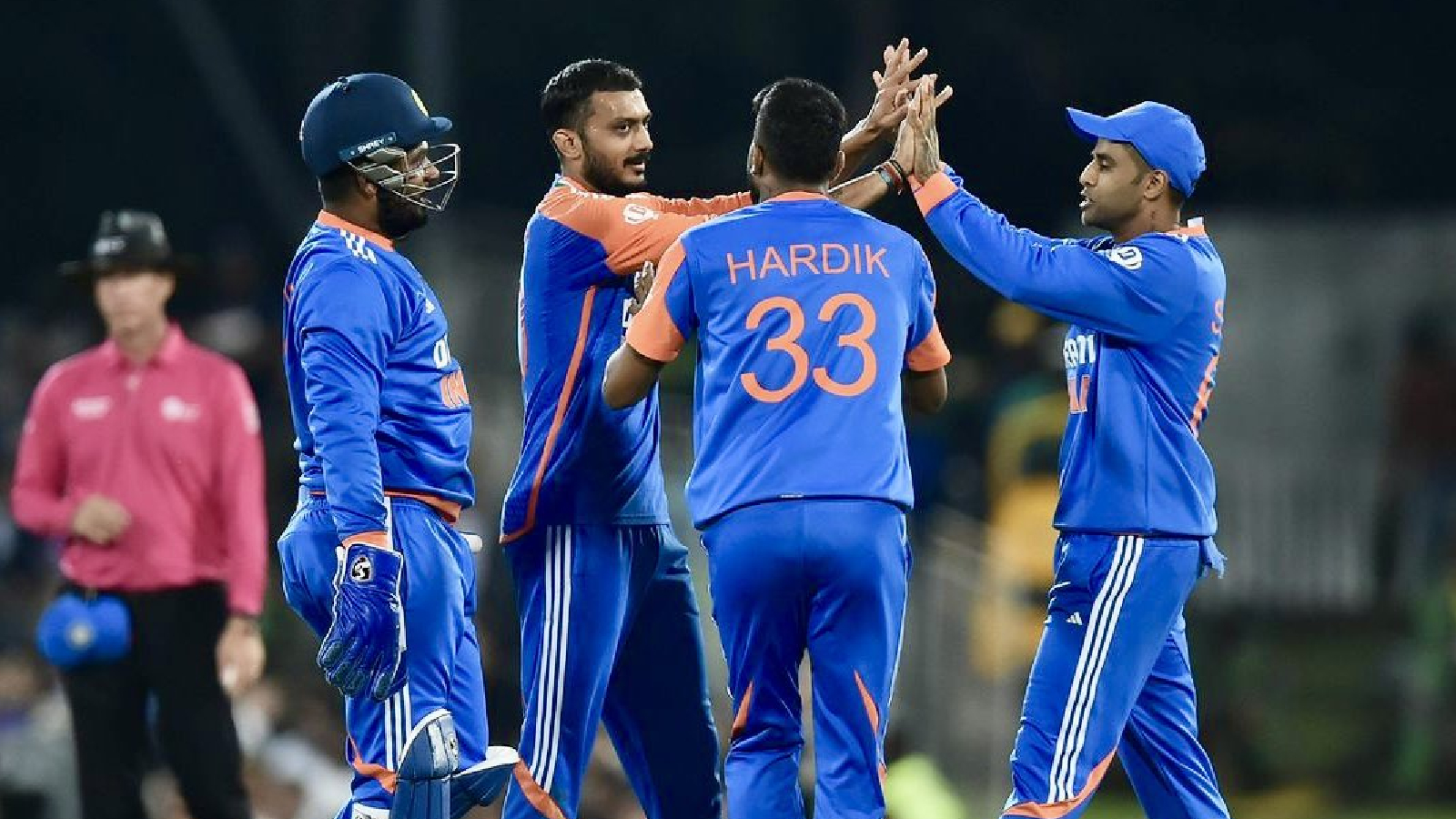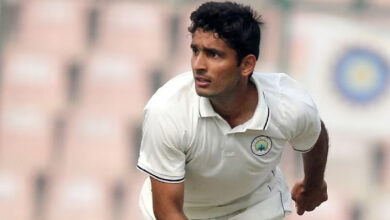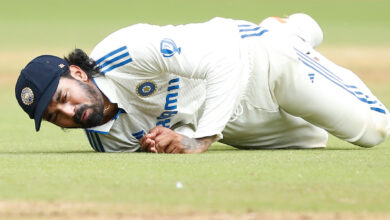Border-Gavaskar Trophy: What’s happening with the Nagpur pitch for India-Australia Test? Why are certain patches watered, some rolled, some left dry?

Things dramatically spiked up on Tuesday evening at the Jamtha stadium as the ground staff descended on the pitch for some special fine-tuning in the age-old Indian way. The entire surface was first watered, then only the centre of the pitch got the roller treatment, and extra watering done outside the left-hander’s leg stump. What was happening?
When pushed to ‘designer mode’ Indian groundsmen can be very creative, treating the pitch as not one organic whole but segmented in patches.
“These spots would be generally hard to spot visiting teams. Because what happens is, the top layer is usually rough and the bottom layer will be hard. It is basically a trap, which many visiting teams fall for. The centre of the pitch will be watered, but the amount will be gradually brought down. Some of us use garden showers just to ensure the pitch gets only the right amount of water. Closer to the game, the grass will be culled. The top layer will expand when it absorbs water and it will get loose,” a curator, who doesn’t wish to be named and who has produced Test pitches in the past explains.
An early look at the Nagpur pitch 👀 #INDvAUS pic.twitter.com/S3BIu7qti8
— cricket.com.au (@cricketcomau) February 7, 2023
The trick is pretty simple. Water on the good length areas, say, let it soak in to 2mm depth, and just wait for the magic potion to do its bit. In two days, those areas would go softer, and an odd boot pressed on it on the first day would dent it enough to produce decent rough patches to aim for.
On day one at Nagpur Test, be prepared for powdery dust to fly and the commentators to zoom in on the offending area and offer pithily, “puff of dust”.
While the puff of dust that usually comes off from ball 1 can indicate the pitch being a rank turner, it can also be a bluff according to a curator.
“There are instances where some of us leave just a puff of dust on the pitch, which will come off every now and then, but that is only on the top layer. Once that bottom layer holds firm, there will be nothing on it. These are subtle things only our batsmen will understand and get used to,” the curator says.
The Australians should know all this now. The story of how Sachin Tendulkar nullified the threat of Shane Warne in the 1998 series, and in particular that sensational hundred at Chepauk in Chennai is part of the folk lore. The invisible hand of the long-time curator K Parthasarathy played its part too.
“I kept the square patches outside the leg stump, on either side of the wicket, really hard. It was difficult to get turn from that part as there would be no rough there. After that game, Warne came to me and asked why he wasn’t getting the turn and others were. I told him it was because of his dodgy shoulder, that was to be operated on later in the series,” Parthasarathy once told this newspaper.
Parthasarathy was at it again in the 2013 Chennai Test against Australia. It was a game where the Indian spinners had taken 20 wickets but the expected chorus of criticism from the visiting team was missing.
“We started making the entire pitch firm. After that, we watered it selectively. The areas on either side of the stumps were kept dry, and so turned out to be loose. The line of the stumps was watered and rolled, so it stayed firm through the Test,” he says.“If I had kept the entire pitch dry, people would have called it under-prepared. But now nobody is complaining.”
Selective tuning, where a certain part of the pitch is left hard, is done carefully. In most cases it is for the team’s left-handed batsmen where there is patch on the fuller-length on off-side or leg-side which is left hard or watered all along so that there are no rough patches for opposition spinners to make use of. Rishabh Pant was the beneficiary of it during the 2021 home series against England.
Although visiting teams like Australia, do try to replicate such conditions making tailor-made pitches in preparatory camp, those designer tracks that are offered in the middle tend to throw a googly. the early looks of it, Nagpur, Delhi, Dharamsala and Ahmedabad will pose more mysteries to solve.







